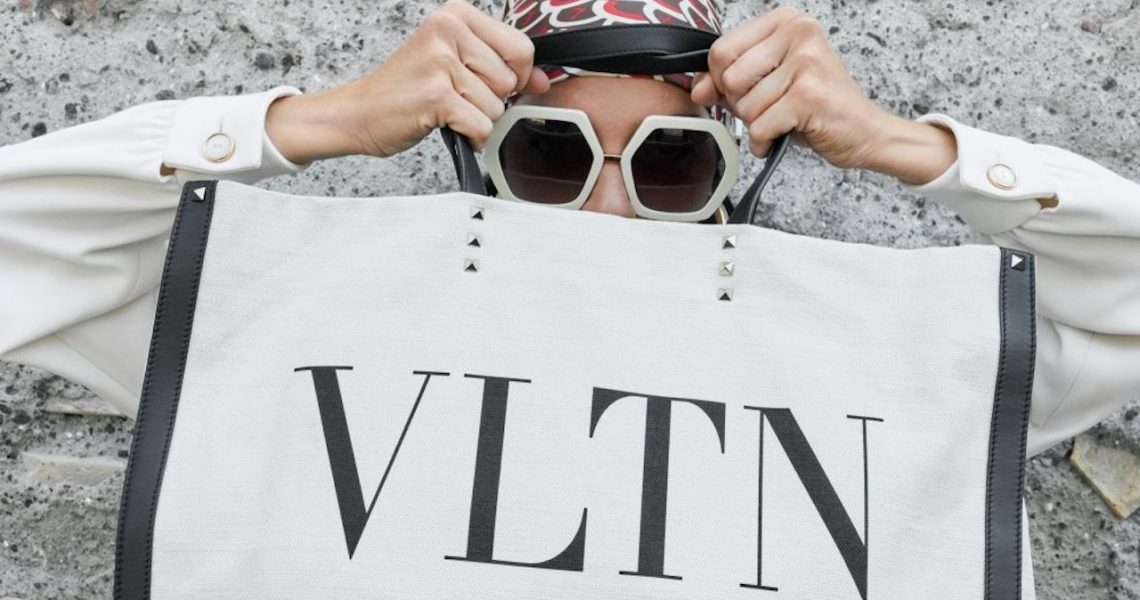Tmall, the massive Chinese e-commerce platform, has positioned itself as the gateway between brands from outside of China and Chinese consumers, who are increasingly some of the most valuable and lucrative audiences for luxury brands. Over the course of 2018, Tmall’s effort to lure more luxury brands was proven successful as an accelerating cadre of luxury brands joined the program, culminating with Bottega Veneta, which joined the program on Tuesday.
In August 2017, Tmall launched the Luxury Pavilion, a platform for luxury brands outside of China to sell their goods to Chinese customers without having to build their own infrastructure. At launch, there were only 17 brands on the Luxury Pavilion. Now, just over a year later, that number has snowballed to a total of 82. In the week spanning the end of November and the beginning of December, the program gained two new, big names in the luxury space: Ermenegildo Zegna and Valentino. Tmall celebrated the launch of Valentino by debuting its new computer-generated “digital influencer,” Noonoouri, wearing a Valentino outfit.
When the Pavilion was first launched, the luxury brands it offered did not include many of the biggest players in the luxury space. They included Zenith, Rimowa and Hugo Boss. With $3.5 billion in annual revenue, Burberry was the largest luxury player in the first group of 17 brands to sign on.
Now, the program boasts partnerships with some of the biggest names in luxury, including Givenchy, Versace, Tod’s, Stella McCartney and Tag Heuer. The program has even extended beyond brands: In October, Richemont and Alibaba announced a joint venture to bring Chinese versions of Net-a-Porter and Mr Porter to the Luxury Pavilion.
“Many Western luxury brands are joining Tmall’s Luxury Pavillion, and for good reasons,” said David Naumann, vp of marketing at Boston Retail Partners. “The China market is the single largest market for luxury goods in the world, as it currently accounts for a third of all luxury goods worldwide, and that percentage will continue to increase. Luxury brands can’t ignore this massive market. Tmall’s Luxury Pavillion is the top online location for China’s luxury shoppers”
Naumann pointed to recent stats, like online sales accounting for 25 percent of all luxury sales by 2025, as evidence that Tmall is in a good place to capture more luxury sales.
In addition to the veritable slew of new brands that joined this year at an accelerating speed (the portfolio of 80 brands was at just 50 in April of this year), the program’s consumer base is becoming more valuable. According to figures from Alibaba, Luxury Pavilion’s roughly 100,000 customers spend an average of $159,000 each, per year. And these customers are not going anywhere anytime soon. Alibaba said that a little less than half of those consumers are 28 years old or younger. Additionally, in the last year, sales through the Luxury Pavilion have grown by 46 percent, and the number of luxury shoppers grew by 36 percent.
Ad position: web_incontent_pos1
Alibaba has often been called the “Amazon of China,” but luxury is one area where the two have wildly diverged. Tmall has gained the favor of luxury brands by allowing them to set up individualized stores on the Luxury Pavilion. Amazon, on the other hand, has struggled to attract any attention from luxury brands.
“Non-Chinese brands need to understand more about the Chinese market and how local consumers shop,” said Lili Chen, the general manager of Tmall’s Luxury Pavilion. “For example, millennials continue to drive the majority of growth in luxury spending in China and are an important driver of growth for Luxury Pavilion as well. Millennial consumers were born in the age of the internet and are incredibly digitally savvy and increasingly sophisticated and knowledgeable. They don’t see the same distinctions between online and offline, but they are looking for exclusive experiences wherever they go and with LP, we can help brands be innovative, stay connected and interact with these millennial consumers across all touch points.”
China has become one of the most important luxury markets in the world. According to McKinsey, China accounts for close to $80 billion in luxury spending each year, making up nearly a third of all luxury sales in the world. Luxury brands are taking notice of this and are desperate to expand their business in China.
“Today’s Chinese consumer has many choices when purchasing luxury goods,” said Philippe Galtié, evp of global sales at Tiffany & Co, in a statement about Tiffany joining the Luxury Pavilion earlier this year. “[We are] embracing China’s digital innovation as we continue to seek new platforms to deliver a seamless experience to customers in China and around the world.”
But China can be a frustratingly opaque experience for non-Chinese brands. In addition to the unique digital infrastructure of China (which does not offer access to the digital platforms brands outside of China are often used to, like Google or Instagram), there are also cultural barriers to navigate that can be punishing if mishandled. This was something that Dolce & Gabbana learned the hard way when it incurred the ire of Chinese consumers last month.
Tmall’s Luxury Pavilion has explicitly billed itself from the beginning as a gateway between China and the rest of the world.
“We work with these brands on a daily basis to help them figure out what works and what doesn’t. It’s a different customer, so you can’t just take what you’re doing in the U.S. or elsewhere and apply it here,” said Sebastien Badault, Alibaba’s managing director, in a recent interview. “But what does work is exclusives. So brands that partake are leveraging all the right ways to engage with the consumer.”




